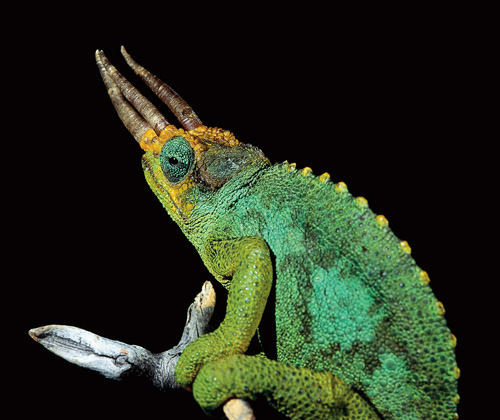Sexual Maturity of Panther Chameleons
by Admin
Posted on 21-11-2023 02:37 PM

Generally, sexual maturity in chameleons is determined by weight rather than age. A quickly grown chameleon female might be much earlier receptive than a slowly growing sibling. So there is no “optimum age” for the first mating. But we advise mating only females that have reached the average adult size of their species. Too early mated, too small females tend to get problems when it is time to lay eggs and face shortened life expectancy. Only choose chameleons for a mating that seem to be healthy. And when you like to keep your chameleons for years, also ensure to mate the females not too often per year.

Various theories have surrounded the lifespan of a veiled chameleon but the verified and approved theory has indicated that a male veiled chameleon can live up to 8 years while the female veiled chameleon can live for as long as 5 years. The veiled chameleon is known to have the ability to breed more than once a year and they usually attain sexual maturity at 4 to 5 months. Read more: pros and cons of own female or male chameleons.

Panther chameleons grow 16-20" (40-51cm) long, with females typically being smaller than males. In a form of sexual dimorphism , males are more vibrantly colored than the females. Coloration varies with location, and the different color patterns of panther chameleons are commonly referred to as 'locales', which are named after the geographical location in which they are found. Panther chameleons from the areas of nosy be , ankify , and ambanja are typically a vibrant blue, and those from ambilobe , antsiranana , and sambava are red, green or orange. The areas of maroantsetra and tamatave yield primarily red specimens.
Properly feeding and supplementing chameleons can be challenging and confusing. Between offering a good variety of insect feeders and properly supplementing, it is easy to take shortcuts or miss a crucial component. Unfortunately this can lead to health issues and even death for your chameleon. Chameleons are insectivores—their diet is mainly insects. Unlike other insect-eating species, chameleons rarely eat insects that are not alive. This means caring for prey items is part of keeping chameleons. It also means that all those easy-to-buy cans of dried insects available at most big box pet stores are not an option.